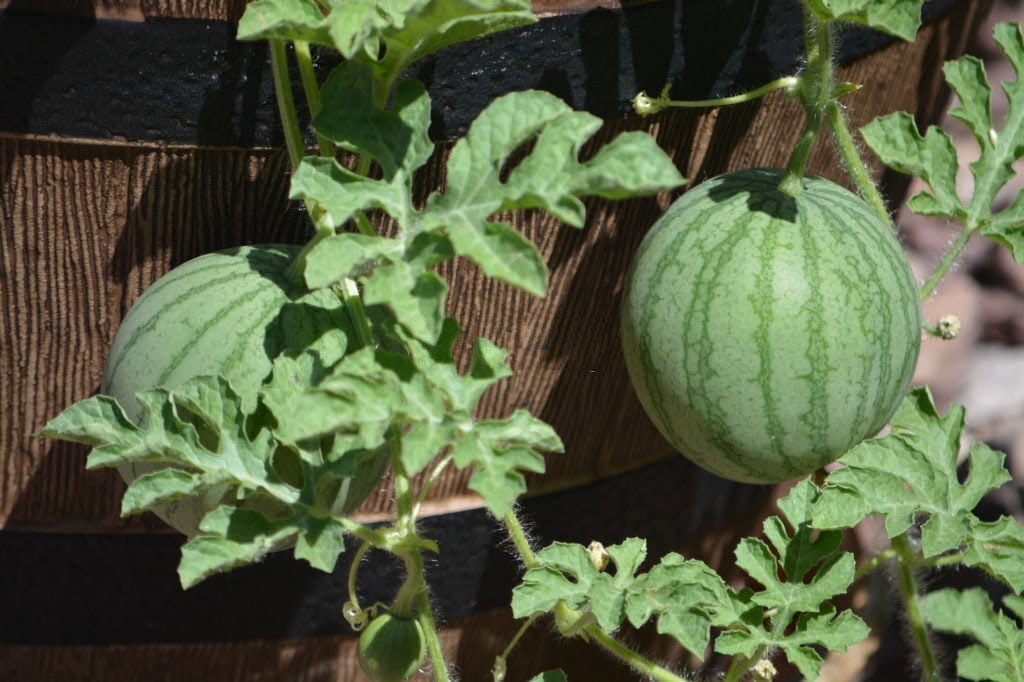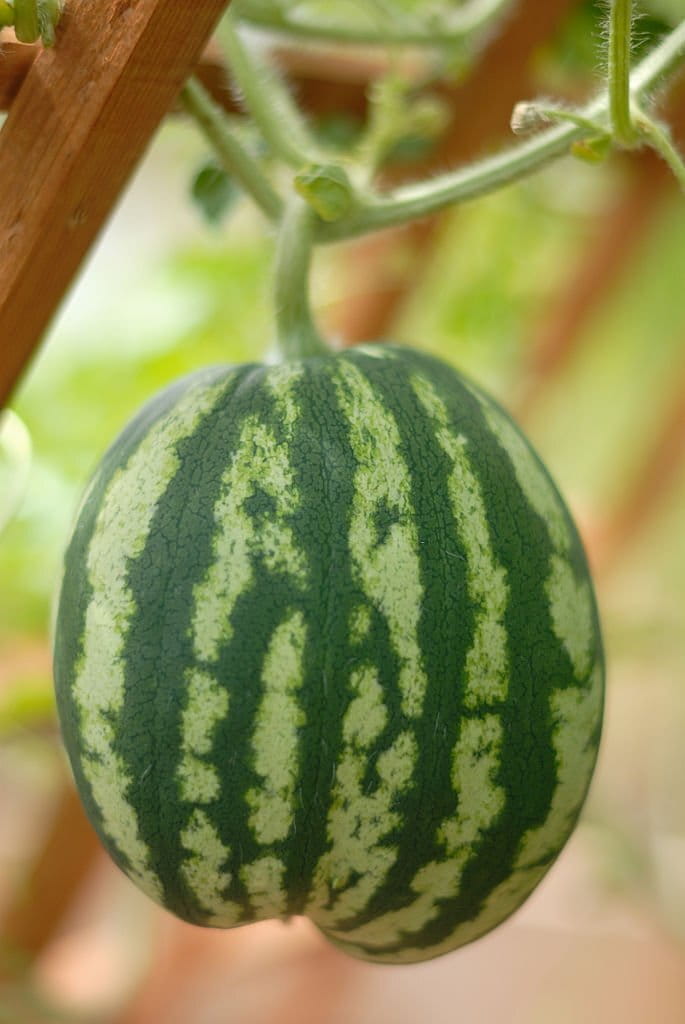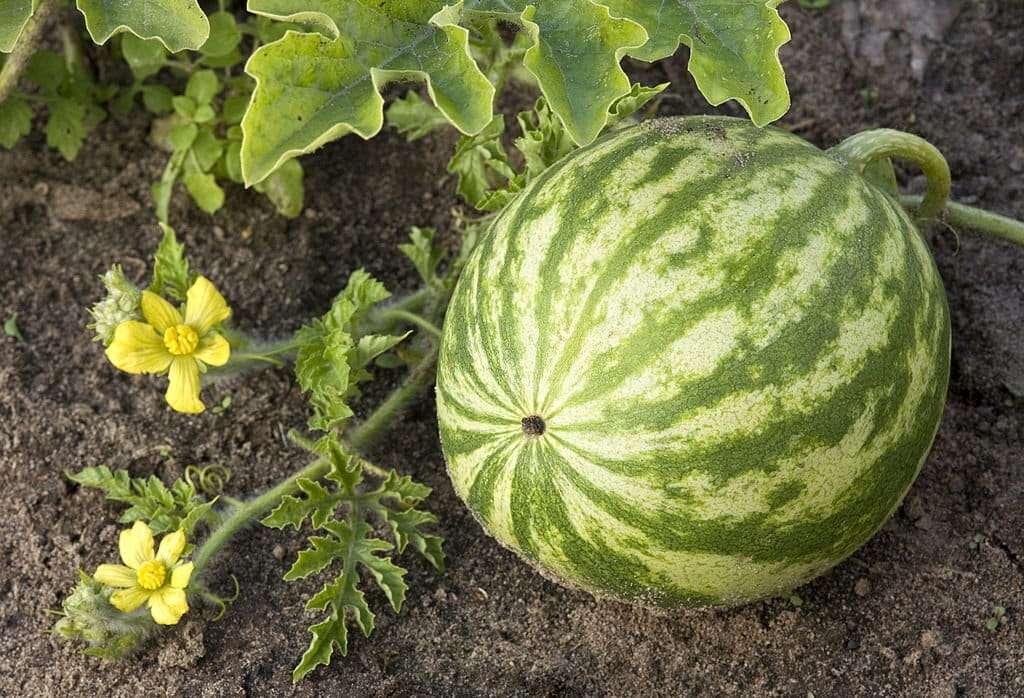Are you a fan of the outdoors? If that’s the case, you most likely have a vegetable and fruit garden. Watermelon is one of the most popular fruits, and if you’re wondering how to grow watermelon in a small space; it’s difficult to cultivate everything you want unless you have a large vegetable garden, especially when it comes to vine crops that take up a lot of space. This information will be beneficial to you.
Watermelons can be planted in a number of locations and don’t normally take up a lot of room, though there should be enough space between each seedling for them to thrive.
It can be planted in pots, containers, or a small section of your garden as long as the soil is nutrient-rich enough for them to thrive.
You can be confident that the size of your watermelon doesn’t matter; it can thrive in a small place if properly cared for. Let’s have a look at how to grow watermelon in a limited space.
How to grow watermelon in a small space
There are two main ways to grow watermelons in small spaces. It is grown in containers, or on a trellis. We will detail these two ways in the following section.
1. Grow watermelon in containers
Watermelons can be grown in containers if you have a small garden. Container watermelons are possible and enjoyable, whether you are undertaking balcony gardening or simply seeking a better way to use the limited space you have.
Growing watermelons in pots successfully begin before you even plant your watermelon seed. You’ll need to pick a pot that’s big enough for your container watermelon to grow in.

Because watermelons develop quickly and require a lot of water, it’s best to use a 5-gallon or bigger container. Make sure the container you’re using to cultivate watermelons has plenty of drainage holes.
Using potting soil or other soilless mixtures, fill the watermelon container. Garden dirt should not be used. This will condense quickly in the container, making it difficult to cultivate watermelons in containers.
Place the seed into the soil once you’ve chosen the container in which you’ll grow the watermelons. The seed should be placed three times its length. Water the seed thoroughly.
A seedling that has been started indoors can also be transplanted into the soil. If you’re going to plant seeds or a seedling, make sure you do so in the warm weather.
2. Grow on the trellis
If you have avoided growing watermelons because your garden is too small, then wait no more, use a trellis.
The first step is to select the appropriate melon seeds. In the next section of the article, we shall recommend this option. They can fill a 15-foot span with a decent selection. You’ll be able to harvest those luscious and huge watermelons if you take proper care of the equipment.

Watermelons require a lot of light, so make sure they get plenty of it, at least 8 hours a day. Watermelon plants, on the other hand, may grow successfully with only 6 hours of sunshine. We need light, but we also need to offer nutrients through watering and fertilizer.
Give your watermelon trellis as much soil as possible. Even though they grow vertically on the trellis, their roots help them absorb nutrients since their root system is so extensive. These roots will go as deep as they can, can grow to be many feet long, and will catch you off guard.
Take care of weeds in your garden, limiting them to appear around the watermelon root area. Weeds can absorb nutrients from the soil and lead to deficiencies, causing stunting of plants.
Watermelons thrive in hot climates and mature in 90-100 days on average. In general, they don’t do well in cool, overcast weather. Some kinds, on the other hand, have been bred to mature quickly or to withstand colder temperatures. Please take notice of the optimal time to plant watermelons to ensure that they grow to their full potential.
You can harvest 20-30 pounds of trellis-grown watermelons with deep soil and proper growing circumstances. That’s a significant amount of weight! Make sure your trellis is capable of handling it.
Choose a spot for the truss on the north and south sides so that the plant receives the most sunshine in the summer. The placement of trusses in the east and west should be limited since they will be readily shaded.
Watermelon plants can grow up to two feet in a week! Because they won’t climb a trellis on their own, you’ll have to tie the vines to it as they grow.
Don’t rely on their tendrils to keep the plants stable, especially during windstorms or when big fruits are hanging from them. Watermelon vines can be trained to climb in the appropriate direction using thin wire or simply ribbon.
Watermelons will fall off the vines and break if the fruit has grown to a weight of more than a couple of pounds. You’ll need to create a sling attached to the trellis to support them. Slings can be made from a variety of materials. Some folks utilize onion mesh sacks, fabric scraps, or even bird netting.
The wind is tolerated better by trellis-grown vines, and they lose more moisture than vines grown on the ground. When the weather is dry, make sure to water your plants once or twice a week. Weed control also aids the watermelon plant’s ability to absorb the greatest quantity of water applied to the soil. You won’t have to water as frequently this way.
Read more: How To Tell If Watermelon Is Pollinated
Best watermelon varieties
1. Crimson Sweet
This watermelon variety is currently the first choice of many families because of its delicious taste, high yield, and good disease resistance.
This huge, round cultivar has pale green skin with dark green stripes and weighs roughly 25-35 pounds when harvested. The flesh of this watermelon is dark crimson, solid, and finely textured, with little dark seeds.
The high sugar content of ‘Crimson Sweet’ contributes to its delectable sweet flavor. Fruits have thick rinds that withstand handling well.
Plants are strong and resistant to anthracnose and fusarium wilt, reaching heights of 15-24 inches with a spread of six to eight feet. In 80 days, you’ll be able to harvest these luscious, juicy melons.
2. Icebox
This watermelon is 6-15 pounds in weight and will fit in your refrigerator. Furthermore, because they mature earlier than other varieties of melons, seasonal producers choose this watermelon species.
3. Blacktail Mountain
If you live somewhere where it gets cold at night, this watermelon type is ideal. Watermelons enjoy warmer weather, but this cultivar is popular in Northern Idaho because it can withstand cold nighttime temperatures. Each watermelon can weigh anything from 6 to 15 pounds, roughly the same as a refrigerator. The spherical fruits have a dark green exterior and tasty scarlet-colored flesh. This type matures in approximately 70-75 days, making it ideal for northern climates with chilly nights and short growing seasons.
4. Bush Sugar Baby
On “space-saving vines, Bush Sugar Baby produces an average of two 12-pound melons per plant. This icebox variety produces oval dark green fruits with sweet crimson flesh that can be stored in the refrigerator.
Plants reach a height of 15-24 inches, with vines reaching a length of 3 1/2 feet.
Cool temperatures, cracking, drought, and sunburn are all resistant to this cultivar. They will be ready to harvest in around 80 days.
5. Personal
If you enjoy watermelon but wish you could harvest single-serving fruits, personal type melons would brighten your day.
These cultivars are delicious split in half and eaten with a spoon, weighing between three and six pounds.
Watermelons of the personal variety are especially beneficial to those of us who live in areas with limited growing seasons and the possibility of an early frost.
They’ll provide a great early summer treat as you wait for your big picnic varietals to ripen for those with long summer growing seasons or gardeners in warmer climates who got a late start on their garden.
6. Mini Love
Mini Love is a tiny, high-yielding hybrid that produces single-serving-size round watermelons. Fruits weigh three to six pounds and are produced in clusters of six per plant.
This cultivar’s flesh is bright red and heavy in sugar, making it a tasty and juicy personal-sized delicacy.
With vines that are only three to four feet long, Mini Love is a perfect choice for growing in tiny areas and pots. Anthracnose resistance is high in some plants.
The rinds of fruits are thin but sturdy, making them resistant to cracking and splitting. In about 70 days, this early maturing cultivar will be ready to harvest.
Read more: 8 Watermelon Growing Stages You Need To Know
Final thoughts

The knowledge on how to produce watermelon in a short place was provided in the preceding article. So your garden will be able to produce luscious and tasty watermelons next year. Please contact us right away if you have any questions regarding cultivating watermelons.